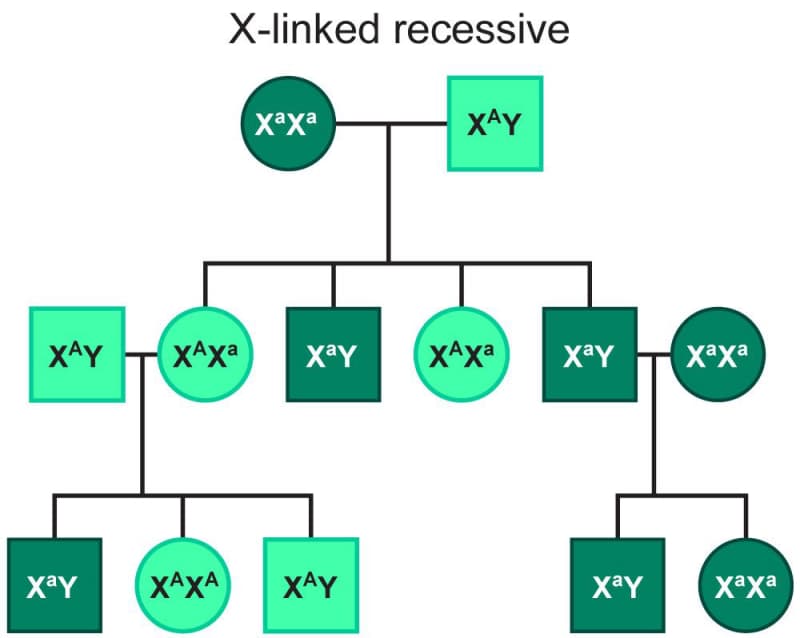The patterns of inheritance of most traits do not follow the ratios predicted by Mendel’s laws. There are many instances where the observed phenotypic ratios of a trait differ greatly from the ratios that would be predicted using Mendel’s laws. This occurs for a variety of reasons. If the genes are close to one another and on the same chromosome, they may be genetically linked. Gene linkage is when two genes tend to be inherited together. This violates the law of independent assortment as they are more likely to be inherited together. In fact, sometimes the distance on a chromosome between the two genes can be calculated by using the probability that the genes will be inherited a unit. This is called gene, or genetic, mapping. Mendel also formulated his laws using observations of phenotypic traits under the assumption that each trait was controlled by one gene. However, we now know that many traits are the product of multiple genes acting in combination with each other. These traits therefore are not inherited in Mendelian patterns.
There are also instances where normal allele dominance does not occur. Some genes, when heterozygous, express a completely different phenotype than either homozygous allele. This is called codominance. Incomplete dominance can also occur in instances where there resulting heterozygote has a phenotype that is a blended version of both the homozygote phenotypes.
Sex-linked Traits
One other example of non-Mendelian genetics is sex-linked traits. Sex-linked traits are those that are determined by genes on sex chromosomes. The pattern of inheritance of these genes differs from others. As a reminder, in humans, having two X chromosomes is typical for those with ovaries and having XY is typical for those with tesitcles. X-linked genes are genes that are found on the X chromosome. Since typical males only receive one version of the gene from their parents, X-linked recessive traits are more commonly expressed in XY individuals. A mother who does not express the recessive trait can pass the recessive allele to her son, who will automatically express the trait and pass the allele on to all of his daughters. A pedigree is a chart that shows parents and offspring across multiple generations along with their genotype and phenotype.
Pedigrees
Pedigrees are often used to visualize and assess any patterns in inheritance. They are formatted like a family tree where horizontal lines connecting two individuals indicate breeding. Lines that lead down from these, indicate offspring that resulted from the two initial individuals reproducing together. Circles are often used to represent egg producing individuals and squares are used to represent sperm producing individuals. Below is an example of a pedigree for a sex-linked trait. In this pedigree, alleles are shown for a gene that only exists on the X chromosome. Because of this, individuals are more likely to express the recessive allele if they only have one X chromosome. In addition, all offspring inherit the trait from the egg producing parent. As you can see, this results in an uneven distribution of phenotypes by gender.

Figure 5.07: Example of a sex-linked pedigree. In this figure, circles represent individuals with two X chromosomes and squares represent individuals with an X and a Y chromosome. Dark green shapes represent individuals that express the sex-linked trait, while light green shapes represent those who do not.
Non-Nuclear Inheritance
Traits can also be inherited separately from chromosomal or nuclear inheritance. This is called non-nuclear inheritance and primarily results from organelles and DNA that are present in the cytoplasm. Since the cytoplasm also divides during reproduction, the contents are divided, and these can affect the offspring. Chloroplasts and mitochondria, specifically, are randomly assorted into gametes and daughter cells. In animals, all mitochondria come from the egg and so all traits related to mitochondrial DNA come from the mother. Similarly, in plants, mitochondria and chloroplasts come from the ovule and thus are also maternally inherited.













